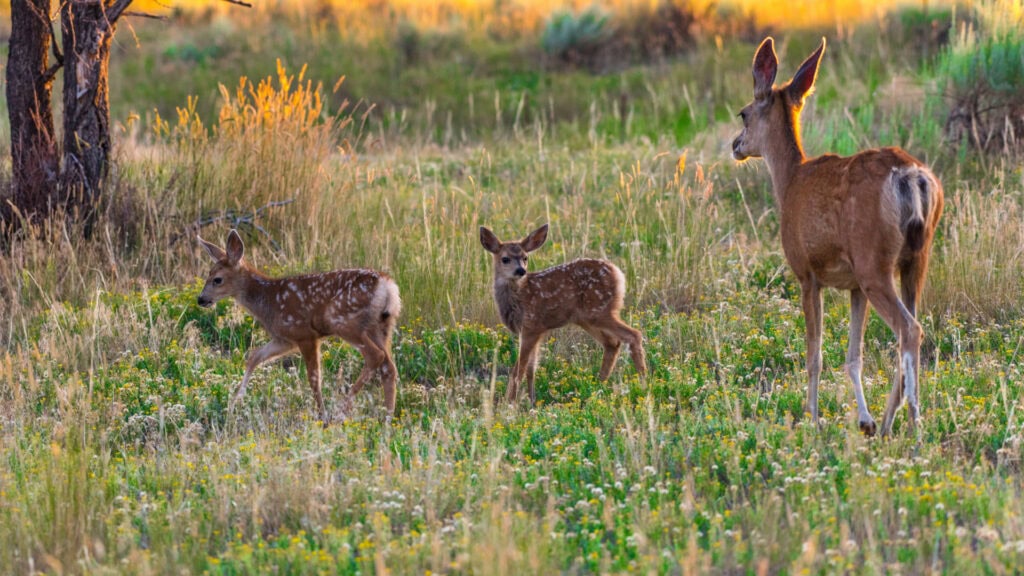Hunting: A Vital Wildlife Management Tool to Prevent Disease Spread
Hunting is not just a recreational activity; it plays an essential role in managing wildlife populations and preventing the spread of debilitating diseases like Chronic Wasting Disease (CWD) and bluetongue. As wildlife populations grow, the risks of disease outbreaks increase, and hunting offers a practical solution to maintain balance and health within ecosystems.
Controlling Wildlife Population Density
Hunting helps to regulate wildlife populations, preventing overcrowding and the associated risk of disease transmission. Chronic Wasting Disease, a fatal neurological disorder affecting deer, elk, and moose, spreads more rapidly in high-density populations. “Reducing population density through hunting has been proven to lower the prevalence of CWD,” notes the Quality Deer Management Association (QDMA) (QDMA, 2023). By keeping population numbers in check, hunting reduces the likelihood of disease spread, benefiting not only the affected species but also the entire ecosystem that relies on them.
CWD spreads through direct animal contact and environmental contamination, making it challenging to control without intervention. The Rocky Mountain Elk Foundation states, “Active management, including hunting, is crucial to minimize the spread of CWD and protect healthy herds” (RMEF, 2023). Without such intervention, the unchecked spread of CWD could lead to significant declines in deer and elk populations, disrupting ecosystem stability.

Mitigating the Spread of Bluetongue
Bluetongue, a viral disease affecting ruminants such as deer and antelope, is transmitted by biting midges. High-density populations can accelerate outbreaks by providing a larger pool of hosts for the virus. Hunting reduces population densities, thereby limiting the opportunities for disease transmission. The National Deer Association (NDA) emphasizes that “controlling herd size through hunting can effectively mitigate the impact of diseases like bluetongue” (NDA, 2023). By reducing the number of susceptible animals, hunting helps maintain healthier populations and supports ecosystem resilience.
The Role of Hunters as Conservationists
Hunters are among the most dedicated conservationists, contributing significant funding to wildlife management and habitat conservation. Through the purchase of licenses, tags, and equipment, hunters generate millions of dollars annually that directly support wildlife research and conservation efforts. According to the U.S. Fish and Wildlife Service, “Hunting funds provide more than $1 billion each year for conservation, helping protect wildlife and natural habitats” (USFWS, 2023).
Hunting is a vital wildlife management tool that helps maintain ecological balance and prevents the spread of diseases like CWD and bluetongue. By keeping wildlife populations at sustainable levels, hunters contribute to the health of ecosystems and ensure that future generations can enjoy thriving wildlife and natural landscapes.
For more information on wildlife and hunting we recommend checking out our blog articles about wildlife management practices: https://www.washingtonstatelandforsale.com/rotational-grazing-and-wildlife-management/

References
Quality Deer Management Association (QDMA). (2023). The Role of Hunting in Managing CWD. Retrieved from https://www.qdma.com
Rocky Mountain Elk Foundation (RMEF). (2023). CWD and the Importance of Population Management. Retrieved from https://www.rmef.org
National Deer Association (NDA). (2023). Bluetongue and Herd Health Management. Retrieved from https://deerassociation.com/cwd/
U.S. Fish and Wildlife Service (USFWS). (2023). How Hunters Fund Conservation. Retrieved from https://www.fws.gov